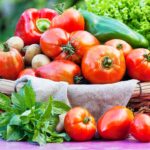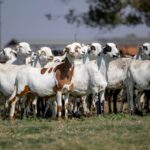Lavender (Lavandula spp.) is a highly sought-after herb known for its aromatic qualities and versatility in culinary, medicinal, and cosmetic applications. For South African farmers, growing lavender can be a profitable venture. This article outlines the detailed process of cultivating lavender from seed to harvest, covering essential inputs, machinery, common diseases, and best practices for care and maintenance.
1. Land Preparation
Site Selection
Choose a location with full sun exposure and well-drained soil. Lavender thrives in warm climates and requires at least 6-8 hours of direct sunlight daily.
Soil Type
Lavender prefers sandy or loamy soils with a pH between 6.5 and 7.5. Avoid heavy clay soils that retain moisture, as this can lead to root rot. Conduct a soil test to determine the pH and nutrient levels, allowing for appropriate amendments.
Preparation Steps
- Clearing: Remove weeds, rocks, and debris from the site.
- Tilling: Use a rototiller or plowing equipment to break up the soil and improve aeration.
- Soil Amendment: Incorporate organic matter, such as compost or well-rotted manure, to enhance soil structure and fertility.
2. Planting Seeds
Seed Selection
Choose high-quality lavender seeds from reputable suppliers. Common varieties for South Africa include English lavender (Lavandula angustifolia) and French lavender (Lavandula dentata).
Sowing Seeds
- Timing: Start seeds indoors 8-10 weeks before the last frost or sow directly outdoors after the frost has passed.
- Method: Sow seeds in seed trays or directly in prepared garden beds. Space seeds about 30-45 cm apart, as lavender requires good airflow.
- Soil Depth: Cover seeds lightly with soil, as they require light to germinate.
Inputs Required
- Seeds: Quality lavender seeds.
- Containers: Seed trays or pots for indoor sowing.
- Potting Mix: Use a well-draining seed starting mix.
3. Germination and Seedling Care
Germination Conditions
- Temperature: Maintain a temperature of 18-20°C for optimal germination.
- Moisture: Keep the soil slightly moist but not waterlogged. Use a misting bottle to avoid overwatering.
Transplanting Seedlings
Once seedlings have developed 2-3 sets of true leaves, transplant them to larger pots or directly into the field, ensuring they are spaced adequately for growth.
4. Growth Stage
Watering
- Frequency: Water lavender once a week during dry spells. Avoid overhead watering to reduce the risk of fungal diseases.
- Amount: Provide enough water to saturate the soil to a depth of about 30 cm, allowing the top layer to dry out between waterings.
Fertilization
- Timing: Apply fertilizer in early spring as new growth begins.
- Type: Use a balanced, slow-release fertilizer with a low nitrogen content (e.g., 5-10-10) to prevent excessive foliage growth at the expense of flowers.
Machinery Required
- Irrigation System: A drip irrigation system is ideal for managing water effectively and reducing weed growth.
- Fertilizer Spreader: For larger farms, consider using a mechanical fertilizer spreader for even application.
5. Pest and Disease Management
Common Pests
- Aphids: Look for signs of sticky residue on leaves. Use insecticidal soap or neem oil for control.
- Spider Mites: Identify by webbing on leaves. Increase humidity and apply miticides as needed.
Diseases to Watch For
- Root Rot: Caused by overwatering or poorly drained soil. Avoid by ensuring good drainage and proper watering techniques.
- Powdery Mildew: A fungal disease appearing as white powder on leaves. Improve air circulation and use fungicides if necessary.
When to Use Pesticides
- Apply pesticides at the first sign of infestation or disease. Always follow label instructions for dosage and timing, and consider organic options whenever possible.
6. Harvesting Lavender
Timing
- Flowering Stage: Harvest lavender when about half of the flower buds are open. This usually occurs in mid-summer (December to January in South Africa).
Harvesting Method
- Hand Harvesting: Use sharp garden shears to cut the stems just above the leaves. Gather stems into small bundles for drying.
Machinery Optional
For larger operations, consider using a mechanical harvester to reduce labor costs and increase efficiency.
7. Post-Harvest Handling and Storage
Drying
- Hang harvested bundles upside down in a cool, dark, and well-ventilated area. This usually takes 1-2 weeks. Ensure proper spacing to allow airflow.
Storage
- Once dried, store lavender in airtight containers away from light and moisture. Use glass jars or vacuum-sealed bags to preserve aroma and quality.
Market Options
Consider selling dried lavender as bundles, essential oils, or culinary products. Explore local markets, online platforms, and specialty shops.
Growing lavender from seed to harvest is a rewarding process for South African farmers, offering both aesthetic and economic benefits. By carefully selecting the right site, soil, and practices, farmers can cultivate healthy lavender plants while managing pests and diseases effectively. With proper harvesting and storage techniques, lavender can become a profitable addition to any farming operation.
Join 'Farmers Mag' WhatsApp Channel
Get the latest Farming news and tips delivered straight to your WhatsApp
CLICK HERE TO JOIN






